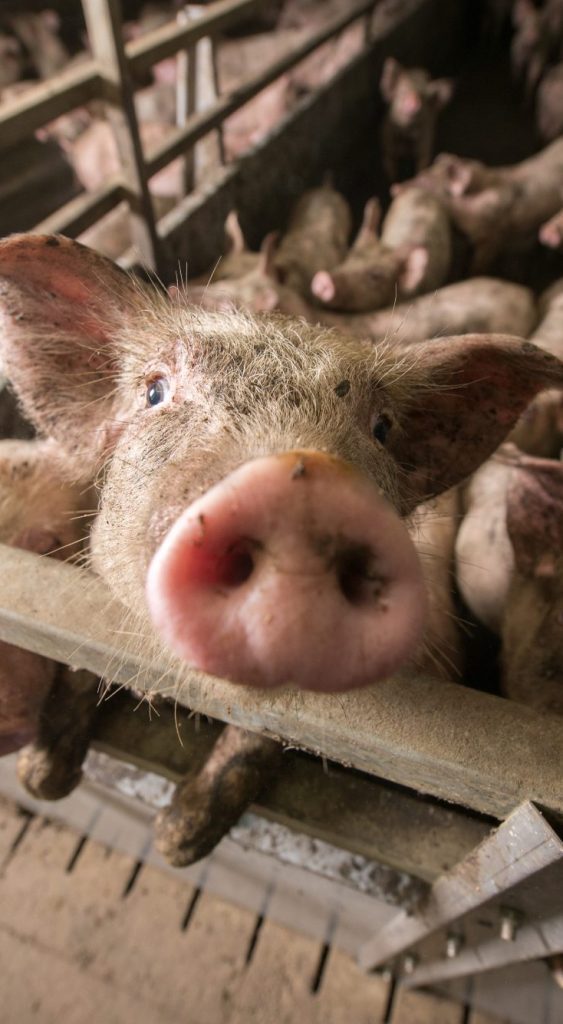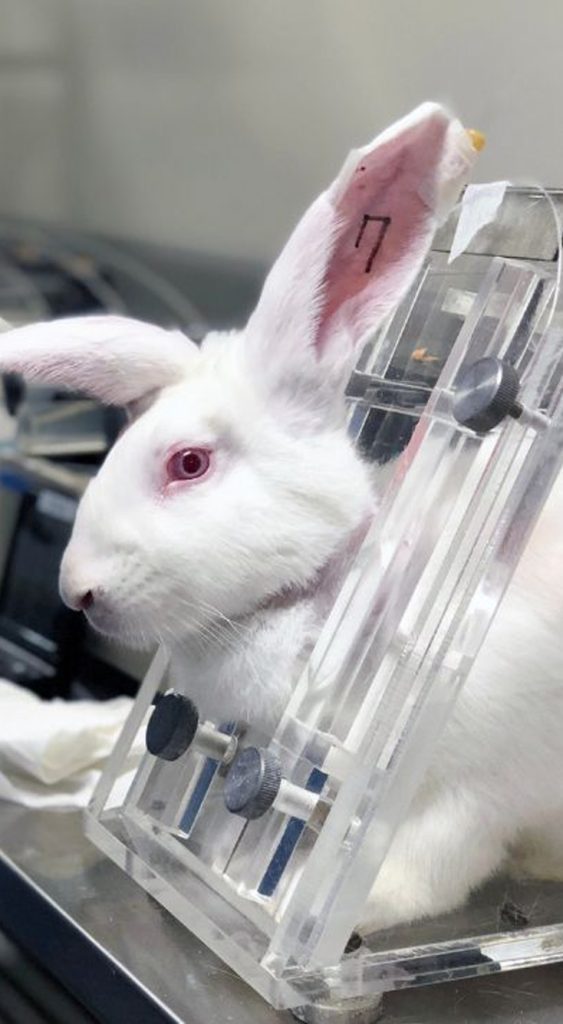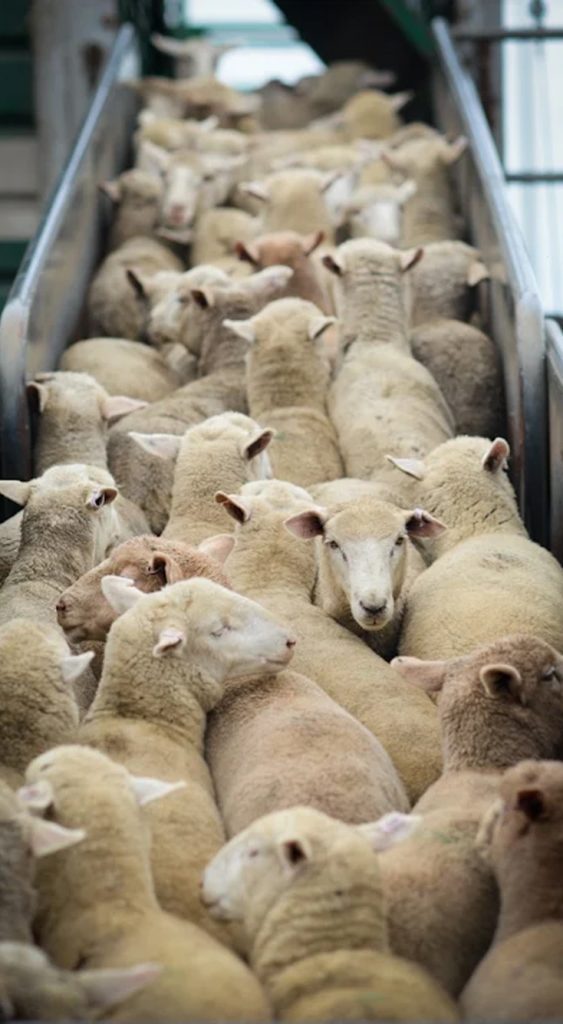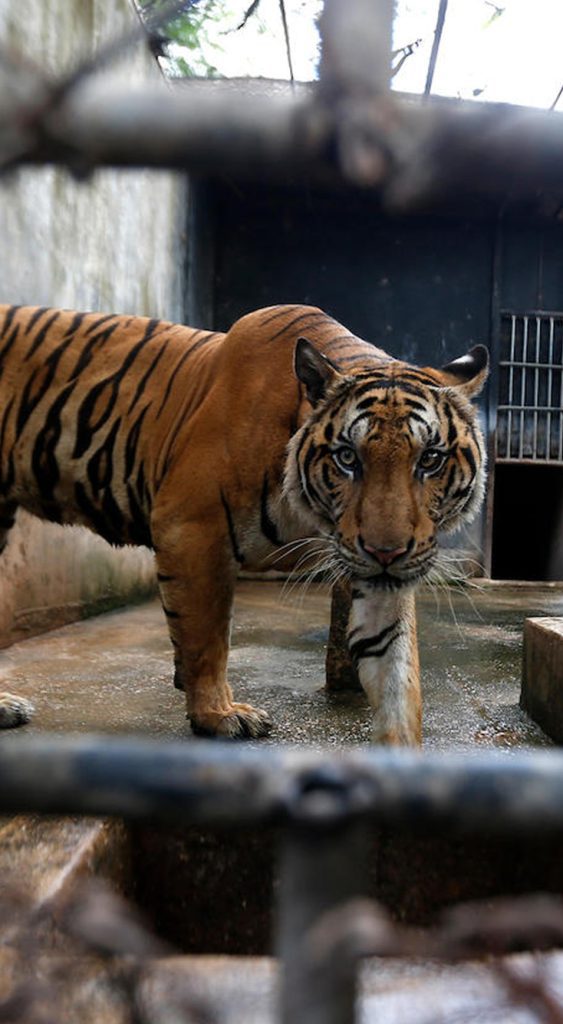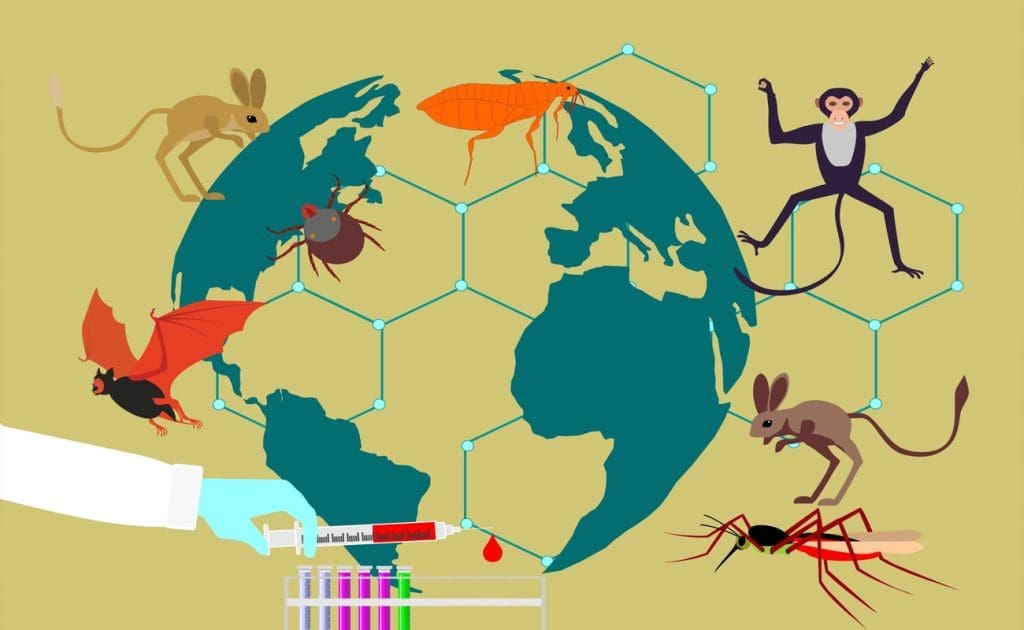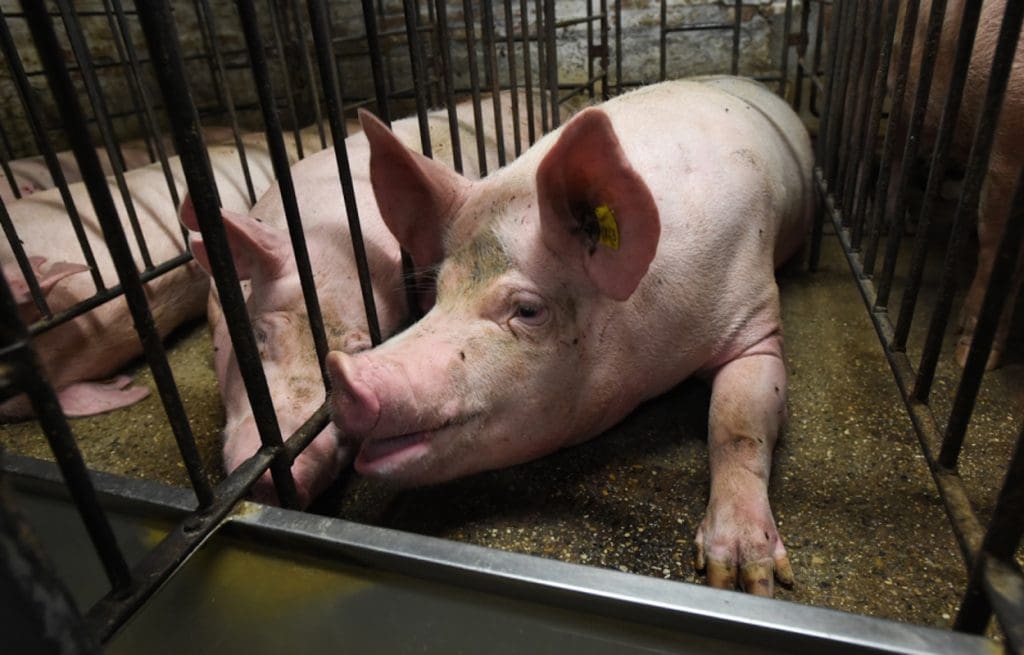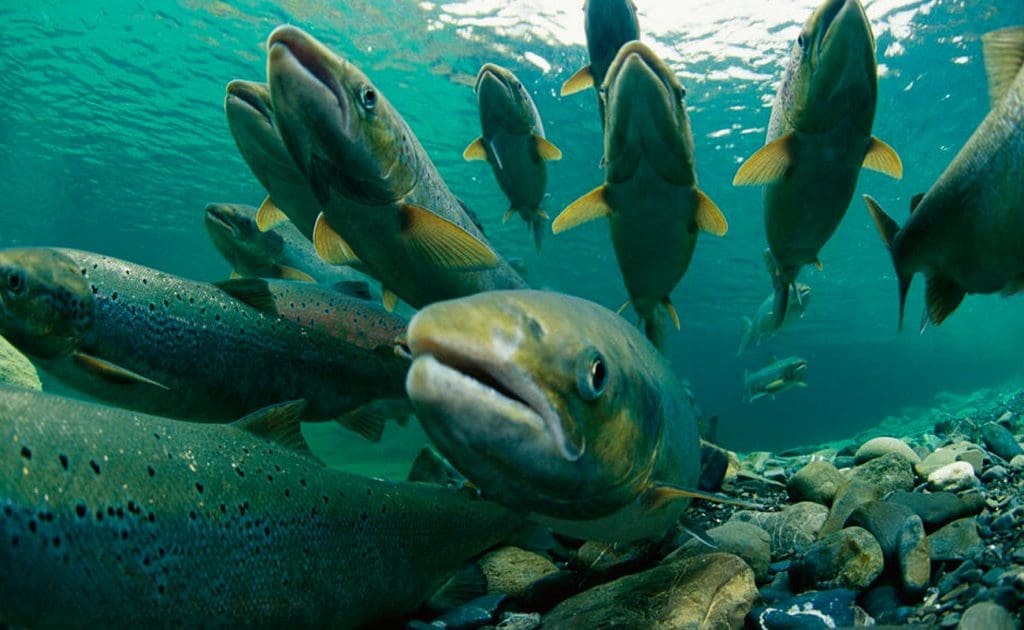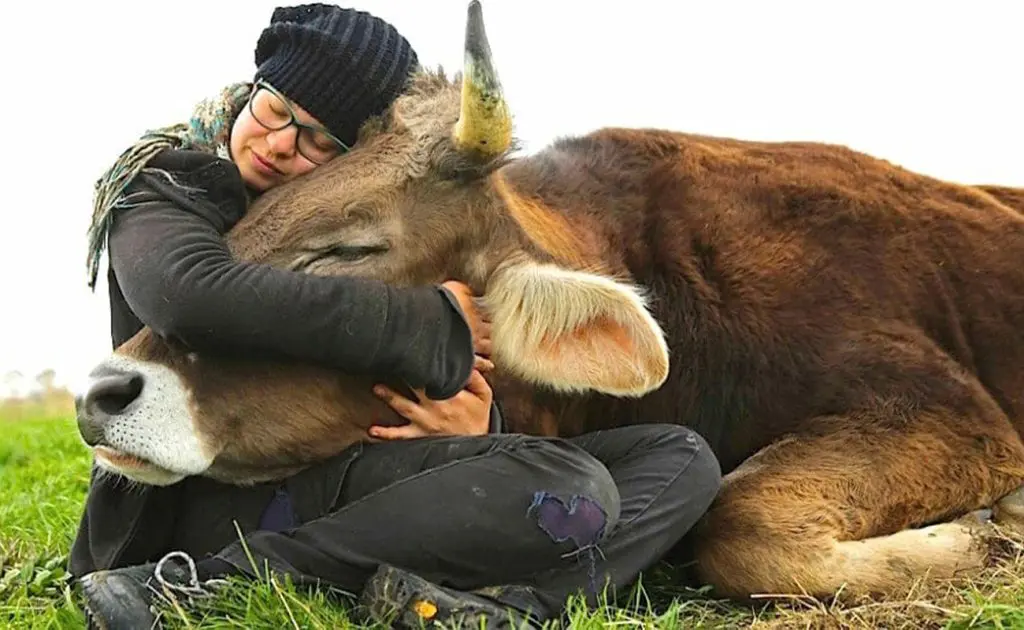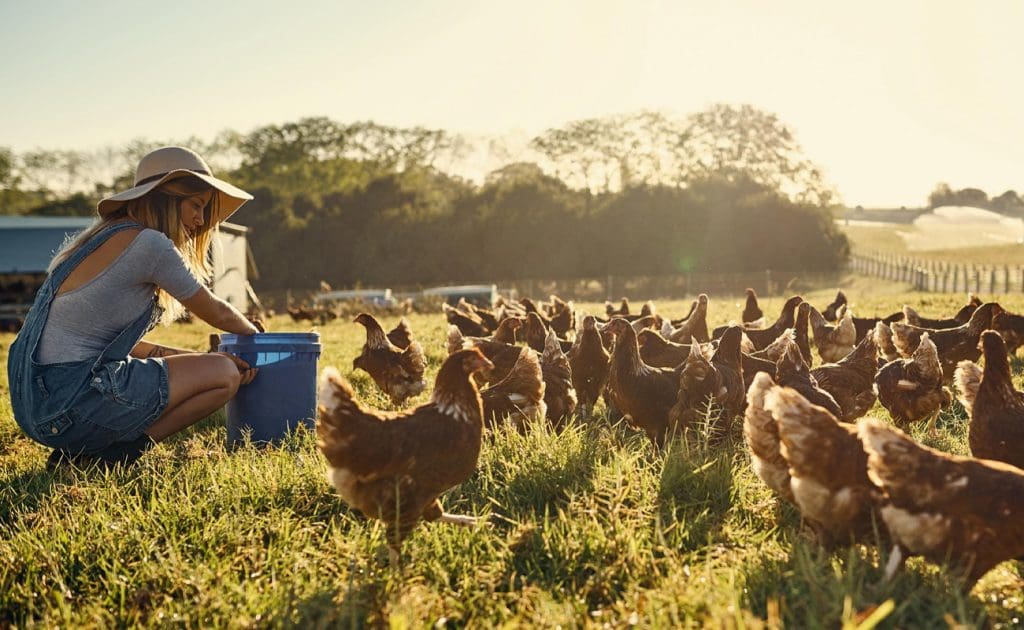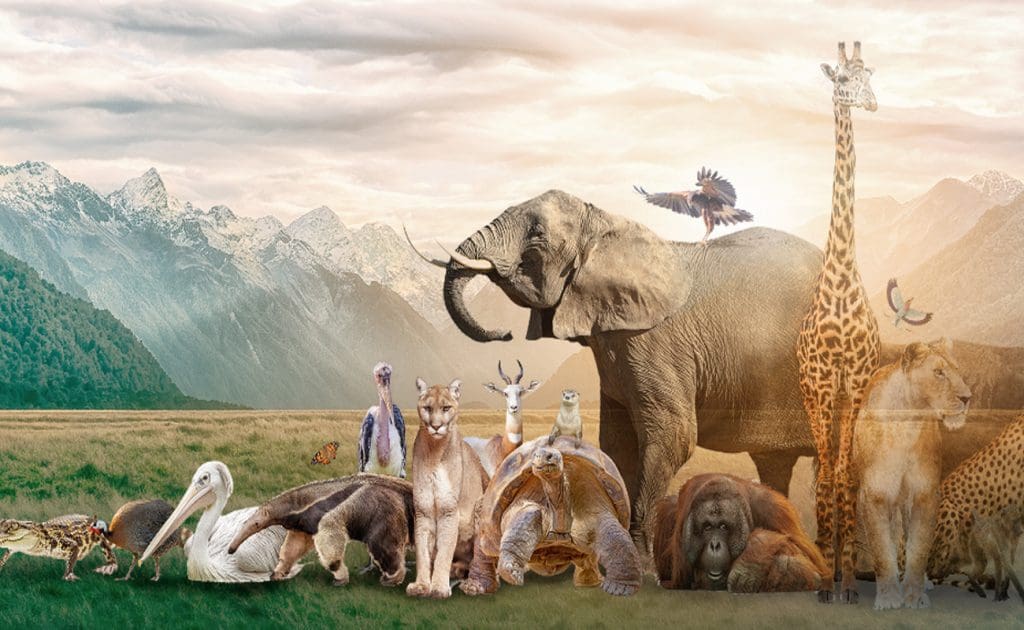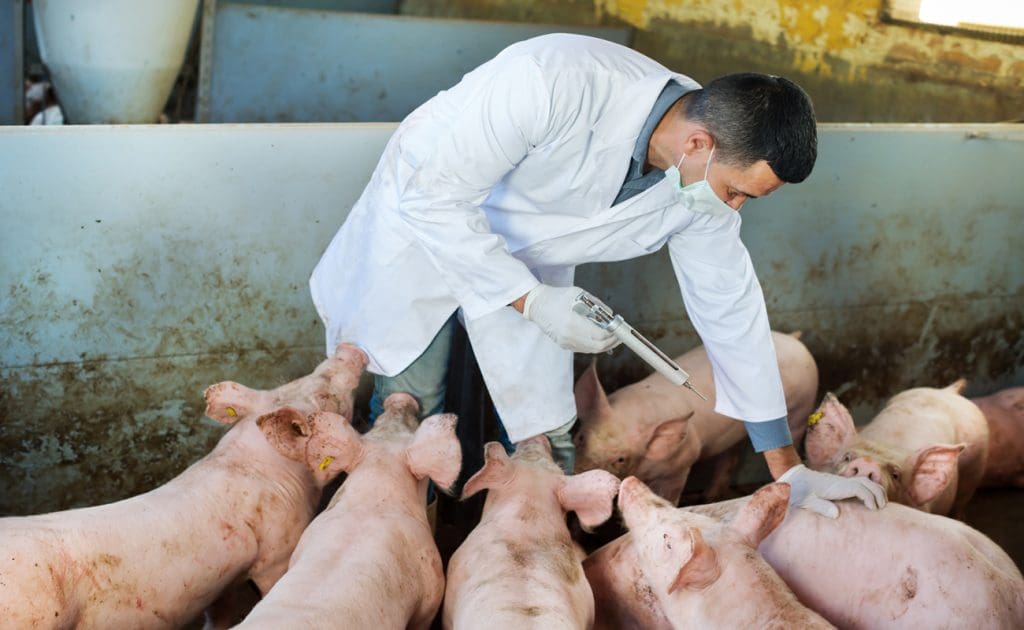
15,000 litri
ta' ilma huma meħtieġa biex jiġi prodott kilogramma ta' laħam tal-ifrat - eżempju ċar ta' kif il-biedja tal-annimali tikkonsma terz tal-ilma ħelu tad-dinja. [1]

80%
tad-deforestazzjoni tal-Amazzonja hija kkawżata mir-ranċing tal-baqar — il-kulprit ewlieni wara d-distruzzjoni tal-foresta tropikali l-kbira tad-dinja. [2]

77%
ta' l-art kullu taha għall-bhejjem u l-għalf tal-annimali — u għadu jipprovdi biss 18% tal-kaloriji tad-dinja u 37% tal-proteini tagħha. [3]

Gassijiet serra
L-agrikoltura industrijali tal-annimali tipproduċi aktar gassij serra mill-int greenhouse mill-industrija tat-trasport kollha flimkien. [4]

92 biljun
tal-annimali terrestri tad-dinja jiġu maqtula għall-ikel kull sena — u 99% minnhom jgħixu ħajjiet fuq irranċi tal-industrija. [5]

400+ tipi
ta' gassijiet tossiċi u aktar minn 300 miljun tunnellata ta' ħmieġ jiġu prodotti mir-ranċi tal-industrija, u b'hekk jippollwixxu l-arja u l-ilma tagħna. [6]

1,048M Tonnellati
milljuuni tannewri tal-qamħ jiġu mitmura lill-bhejjem kull sena — biżżejjed biex jispiċċaw il-ġuħ globali diversi drabi. [7]

37%
ta 'emissjonijiet ta' metanu jiġu mill-agrikoltura tal-annimali — gass serra 80 darba aktar potenti minn CO₂, li twassal għal telf ta 'klima. [8]

80%
ta' l-antibijotici mad-dinja kollha jintużaw fl-annimali tal-biedja tal-fabbrika, u jagħmlu l-antibijotici ma jkunux effettivi. [9]

1 sa 2.8 triljun
miljun annimali tal-baħar jiġu maqtula kull sena mill-ikkummerċjar u l-akwakultura — ħafna minnhom m'għandhomx saħansitra kont f'statistika tal-agrikoltura tal-annimali. [10]

60%
tal-telf tal-bijodiversità globali huwa marbut mal-produzzjoni tal-ikel — b'agrikoltura tal-annimali tkun il-kawża prinċipali. [11]

75%
tal-art agrikola globali tista' tkun ħielsa jekk id-dinja adottat dieti bbażati fuq il-pjanti — u b'hekk tiftaħ żona daqs l-Istati Uniti, iċ-Ċina, u l-Unjoni Ewropea flimkien. [12]

X'qegħdin nagħmlu
L-aħjar ħaġa li nistgħu nagħmlu hu li nibdlu l-mod kif nieklu. Dieta bbażata fuq il-pjanti hija għażla aktar kompatibbli kemm għall-pjaneta tagħna kif ukoll għall-ispeċi diversi li nagħmlu l-ħajja magħhom.
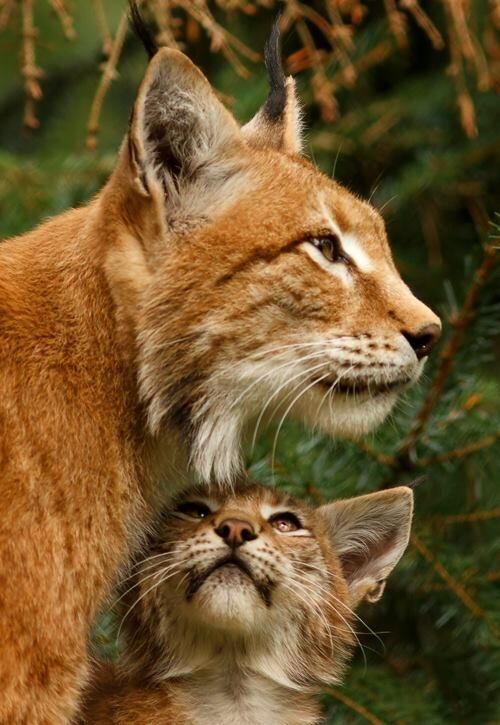
Issejvja l-Art
L-agrikoltura tal-annimali hija l-kawża ewlenija tat-telf ta' bijodiversità u l-estinzjoni tas-speċi globalment, u tpoġġi theżi severa għall-ekosistemi tagħna.
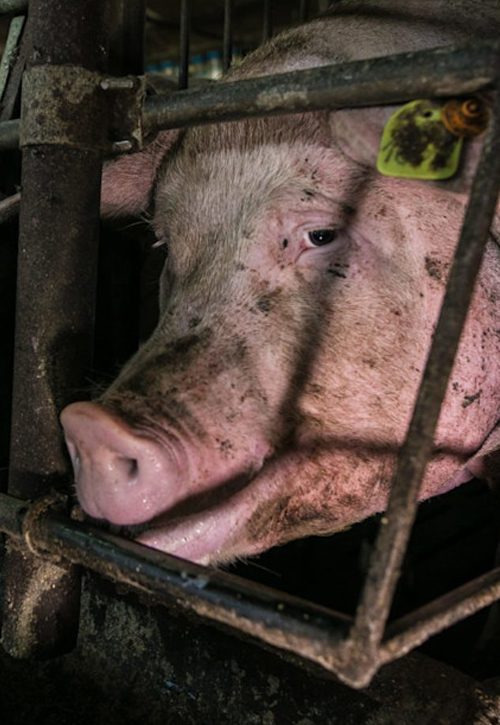
Ispissixxu s-Soffranc Tagħhom
Ir-ranċin tal-industrija jiddependi ħafna fuq id-domanda tal-konsumatur għall-prodotti li ġejjin mill-annimali u derivati minnhom. Kull ikel ibbażat fuq il-pjanti jikkontribwixxi għal-libberazzjoni tal-annimali mis-sistemi ta' kruwelta u sfruttament.

Tirbħu bil-Pjanti
L-ikel ibbażat fuq il-pjanti mhuwiex biss imħaxxar iżda wkoll għani f'vitamini u minerali essenzjali li jsaħħaħ l-enerġija u jippromwovi s-saħħa ġenerali. L-adozzjoni ta' dieta għanja fil-pjanti hija strateġija effettiva biex tiġi evitata l-mard kroniku u tappoġġa s-saħħa fit-tul.
Il-kruelti tal-biedja tal-fabbrika:
Fejn l-annimali jsofru bil-għajta, Aħna nsiru l-vuċi tagħhom.
Is-Soffriment tal-Annimali fl-Agrikoltura
Kull fejn l-annimali jiġu ħsara jew il-vuċi tagħhom ma tintisemx, aħna nidhlu biex niffrawnu l-kruwelta u nħaddnu l-kompassjoni. Naħdmu bla heda biex nespunu l-inġustizzja, nġibu bidla dejjiema, u nipproteġu l-annimali kull fejn il-benessri tagħhom ikun huwa mhedded.
Il-Kriżi
Il-Verità Wara l-Industriji tal-Ikel Tagħna
Ir-realtà wara l-industriji tal-ikel turi realtà moħbija ta ' kruwelti fit-tkabbir tal-annimali, fejn biljuni ta' annimali jgħaddu minn ħajja ta 'suffrenzi kbar kull sena. Lil hinn mill-impatt fuq il-benessri tal-annimali, it-tkabbir industrijali tal-annimali jikkawża wkoll ħsara kbira lill- ambjent, minn bidliet fil-klima għat-telf ta 'bijodiversità. Fl-istess ħin, is-sistema tikkontribwixxi għat-tkabbir tar-riskji għas-saħħa, inklużi l-obeżità, id-dijabete, u l-mard tal-qalb. L-għażla ta' dieta bbażata fuq il-pjanti u l-abbrazzar ta' drawwiet ta'ħajja sostenibbli joffri soluzzjoni qawwija — tnaqqas is-suffrenza tal-annimali, tipproteġi l-pjaneta, u ttejjeb is-saħħa tal-bniedem.
L-INDUSTRJA TAL-LAĦAM
ANNIMALI MAQTULIN GĦALL-LAĦAM
L-annimali maqtula għall-laħam tagħhom jibdew jsofru mill-ġurnata li jitwieldu. L-industrija tal-laħam hija marbuta ma' xi wħud mill-prattiċi tat-trattament l-aktar severi u mhux umani.

Bovini
Imwielda fis-suffrenza, il-baqar jgħaddu minn biża ', iżolament, u proċeduri brutali bħat-tneħħija tal-qrun u kastrazjoni — ħafna qabel ma tibda l-massakru.

Il-Ħnieżir
Il-ħnieżer, aktar intelliġenti mid-djunjunz, iqattgħu ħajjithom f'aziendi tal-biedja tal-fabbrika, imrażżna u mingħajr twieqi. Il-ħnieżer nisa jsofru l-aktar—imħawwla b'mod ripetut u miżmuma f'gaġġiet żgħar ħafna li ma jistgħux anke jduru biex jikkomodaw il-wlied tagħhom.

Il-ġrieden
Il-ġrieden jsofru l-agħar mill-biedja tal-fabbriki. Ippakkjati f'barrakki fdaljin b'milja, jiġu nisselati jikbru malajr u l-ġisem tagħhom ma jistax jiflaħ—iwassal għal diżabilitajiet dolorosi u mewt kmieni. Ħafna jiġu maqtula biss meta jkollhom sitt ġimgħat.

Il-Friefet
Il-ħrief isofru mutilazzjonijiet ħajjin u jitneħħew minn ommienhom ftit jiem wara t-twelid - kollha għal skop tal-laħam. Is-sofferenza tagħhom tibda wisq kmieni u tispiċċa wisq malajr.

Fenek
Il-fniek isofru qtil brutali mingħajr protezzjoni legali - ħafna minnhom jitbatu, jiġu ttrattati ħażin, u jkollhom il-gerżum inhassil waqt li għadhom konxji. L-agonija silenzjuża tagħhom ħafna drabi ma tidhirx.

Dindji
Kull sena, miljuni ta' dundjani jiffaċċjaw mewġiet kruenti, ħafna minnhom imutu minħabba l-istress waqt it-trasport jew anke jkunu mgħollqa ħajjin fil-postijiet tal-maqtul. Minkejja l-intelliġenza u l-legaturi qawwija tal-familja tagħhom, dawn jsofru b'mod kwiet u b'numri kbar.
LIL HADDA L-KRUELTI
L-industrija tal-laħam tagħmel ħsara kemm lill-pjaneta kif ukoll lis-saħħa tagħna.
L-Impatt Ambjentali tal-Laħam
Ir-riedni tal-annimali għall-ikel jikkunsmaw kwantitajiet kbar ta' art, ilma, enerġija u jikkawżaw ħsara ambjentali kbir. L-FAO tan-NU tgħid li t-tnaqqis fil-konsum tal-prodotti tal-annimali hu vitali biex jiġi miġġield il-bidla fil-klima, peress li l-biedja tal-annimali tammonta għal kważi 15% tal-emissjonijiet globali tal-gassijiet serra. Il-fabbriki tal-annimali jarmu wkoll riżorsi kbar ta' ilma —għall-għalf, it-tindif, u x-xorb— filwaqt li jħawwlu iżjed minn 35,000 mil ta' ilma fl-Istati Uniti.
Riskji tas-Saħħa
Tikli prodotti tal-annimali tiżdied ir-riskju ta' problemi serji ta' saħħa. L-WHO tikkategorixxi l-laħam ipproċessat bħala karċinogenu, u tiżdied ir-riskju ta' kanċer tal-kolon u rettali bi 18%. Il-prodotti tal-annimali huma għoljin fi xotti saturati marbutin ma' mard tal-qalb, puplesiji, dijabete, u kanċer - kawżi ewlenin ta' mewt fl-Istati Uniti. Studji juru li l-veġetarjani jgħixu itwal; studju sab li huma 12% inqas probabbli li jmutu matul sitt snin meta mqabbla ma' min jiekol laħam.
L-INDUSTRJA TAL-ĦALIB
IS-SIRR TAL-ĦALIB
Wara kull ħġieġ ta' ħalib hemm ċiklu ta' tbatija—il-baqar omm huma mħawwla b'mod ripetut, biss biex il-wlied tagħhom jitneħħew u l-ħalib tagħhom jiġi mkattar għall-bnedmin.
Familji Miksura
Fuq ir-razzett tad-drija, l-ommijiet jibku għat-trabi tagħhom meta jitħassru — sabiex il-ħalib maħsub għalihom ikun jista' jitqiegħed fil-flixkun għalina.
Konfinati waħedhom
Il-baqar, imċarrfa minn ommhom, iqattgħu l-ewwel snin ta' ħajjithom f'iżolament kiesaħ. L-omm tagħhom jibqgħu marbuta f'postijiet żgħar, jgħaddu snin ta' tbatija sħiħa—biss biex jipproduċu ħalib li qatt ma kien maħsub għalina.
Mutilazzjonijiet Dur
Mill-uġigħ intensi tal-markaġġ sal-ġirien midħla tad-dehurning u t-tneħħija tad-denb—dawn il-proċeduri vjolenti jitmexxew mingħajr anesteżija, u b'hekk il-bovini jibqgħu bil-fergħiet, it-terrifikati, u miksura.
Maqtula b'mod brutali
Il-baqar imrabbi għall-ħalib jiffaċċjaw tmiem kruenti, maqtula żgħar wisq darba ma jipproduċu iktar ħalib. Ħafna jgħaddu minn vjaġġi dolorużi u jibqgħu kunċjenti waqt il-massakru, is-suffrenza tagħhom moħbija wara l-ħitan tal-industrija.
LIL HADDA L-KRUELTI
Id-drija kruweli tagħmel ħsara lill-ambjent u lis-saħħa tagħna.
L-Ispejjeż Ambjentali tal-Ħalib
Il-biedja tal-ħalib tinħareġ kwantitajiet kbar ta' metanu, ossidu nitruż, u dijossidu tal-karbonju—gassos b'saħħithom li jagħmlu ħsara lill-atmosfera. Tħeġġeġ ukoll id-deforestazzjoni billi twassal ħabitats naturali għal artijiet agrikoli u twassal l-impurità lill-għajnjal lokali permezz ta' ġestjoni ħażina tal-ħmieġ u l-fertilizzanti.
Riskji tas-Saħħa
Il-konsum ta' prodotti lattieri huwa assoċjat ma' riskji ogħla ta' kwistjonijiet ta' saħħa serji, inklużi l-kanċer tas-sider u tal-prostata, minħabba l-livelli għoljin ta' fattur ta' tkabbir insulin-like fil-ħalib. Filwaqt li l-kalċju huwa essenzjali għall-għadam b'saħħtu, il-ħalib mhuwiex l-unika jew l-aħjar sors; il-ħaxix bajda u x-robba bbażata fuq il-pjanti offrew alternattivi ħielsa mill-kruwelti u aktar b'saħħtu.
L-INDUSTRJA TAL-BAJD
IL-ĦAJJA TA' TIĊRIKA INGĦALSA
It-tiġieġ huma annimali soċjali li jgawdu mill-ġbir u t-tħassib għal familji tagħhom, iżda jgħixu sa sentejn f'gaġġiet żgħar, ma jistgħux jinfetħu jew jġibu ruħhom b'mod naturali.
34 siegħa ta' tbatija: L-ispiża vera ta' bajda
Tqattigħ ta' Skufful iż-Żgħir
Tiġieħ maskili, li ma jistgħux ibejdu jew jikbru bħal tiġieġ tal-laħam, huma meqjusa bla valur mill-industrija tal-bajd. Immediatament wara t-tfaqqigħ, huma separati minn femminili u maqtula b'mod kruenti— jew mgħoddija ħajjin jew mgħafsa f'magni industrijali.
Konfinament Intens
Fl-Istati Uniti, kważi 75% tat-tiġieġ huma ggarrġati f'gaġġiet żgħar tal-wajer, kull waħda b'inqas spazju minn folja ta' karta ta' stampar. Meħuda biex iqiegħdu fuq wajers iebsin li jġeżżru saqajhom, ħafna tiġieġ jisbu u jmutu f'dawn il-gaġġiet, xi drabi ħallew biex jirridu fost il-ħajjin.
Mutilazzjonijiet Krudeli
Il-ġnien fl-industrija tal-bajd jsofri stress sever minn konfinament estrem, li twassal għal imġiba ta' ħsara bħal qatla lilek innifsek u kannibalizmu. B'riżultat ta' dan, ħaddiema jaqtgħu parti mis-sengħa sensittivi tagħhom mingħajr ebda anestetiku.
LIL HADDA L-KRUELTI
L-industrija tal-bajd tagħmel ħsara kemm lis-saħħa tagħna kif ukoll lill-ambjent.
Bajd u l-Ambjent
Il-produzzjoni tal-bajd tagħmel ħsara kbira lill-ambjent. Kull bajd ikkunsmat jiġġenera nofs libbra ta' gassijiet serra, inklużi l-ammonja u d-diossidu tal-karbonju. Barra minn hekk, kwantitajiet kbar ta' pestiċidi użati fl-agrikoltura tal-bajd jippollwut il-korsijiet tal-ilma lokali u l-arja, u jikkontribwixxu għal ħsara wiesgħa ambjentali.
Riskji tas-Saħħa
Il-bajd jista' jġorr batterji perikolużi tas-Salmonella, anke meta jidher normali, u jikkawża sintomi ta' mard bħal dijarea, denja, uġigħ fil-winter, uremija, u rimettar. Il-bajd tal-fabbriki spiss jiġi minn tiġieġ miżmuma f'kundizzjonijiet ħżiena u jista' jkun fih antibijotici u ormoni li jpoġġu riskji għas-saħħa. Barra minn hekk, il-kontenut għoli ta' kolesterol fil-bajd jista' jikkontribwixxi għal problemi ta' qalb u vaskulari f'xi individwi.
L-INDUSTRJA TAS-SAJD
L-INDUSTRJA TAS-SAJD MORTALI
Is-sajd jħoss uħud u jirrikjedi protezzjoni, iżda m'għandhomx drittijiet legali fit-tnissil jew is-sajd. Minkejja n-natura soċjali tagħhom u l-abbiltà li jħossu uħud, huma trattati bħala komoditajiet sempliċi.
Sajd tal-fabbrika tas-sajd
L-aktar sajd ikkunsmat illum huwa mitrubbi f’akwafarms imħaxxrin fuq l-art jew fuq il-baħar, imżamm il-ħajja kollha f’ibħra mniġġsa b’livelli għoljin ta’ ammonja u nitrati. Dawn il-kundizzjonijiet duri iwasslu għal infestazzjonijiet ta’ parassiti li jattakkaw il-għadegħ, l-organi, u d-demm, kif ukoll infezzjonijiet batterjali mifruxa.
Is-Sajd Industrijali
Is-sajd kummerċjali jikkawża ħafna tbatija għall-annimali, joqtol kważi triljun sajd fis-sena madwar id-dinja. Vapuri kbar jużaw linji twal—sa 50 mil b'mijiet ta' eluf ta' xewdiet—u xbiħiet, li jistgħu jestendu minn 300 pied sa seba' mili. Is-sajd jgħum b'mod bla ħsieb f'dawn ix-xbiħiet, spiss jispiċċa jew jinqatel bil-flus.
Qtil Krudeli
Bla protezzjonijiet legali, is-sajd jsofri l-aktar mewtew orribbli fl-impjanti tal-isfrattar tal-Istati Uniti. Meħuda mill-ilma, jgħarqu bla għajnuna hekk kif il-għadegħ tagħhom tinżel, jibqgħu jgħasfu bil-mod fil-ġirien. Is-sajd akbar—it-ton, l-ispad—huma mgħobbija b’mod brutali, spiss imweġġa’ iżda għadhom jafu, imġiegħla jifilħu l-aktar daqqiet qabel mewtew. Din il-krudeltà bla waqfien tibqa’ moħbija taħt il-wiċċ.
LIL HADDA L-KRUELTI
L-industrija tas-sajd tħassar il-pjaneta tagħna u tagħmel ħsara lis-saħħa tagħna.
Is-Sajd u l-Ambjent
Is-sajd industrijali u s-sajd tal-ħut iż-żewġ injam l-ambjent. Ir-razzettazzjoni tal-ħut tal-fabbrika tniġġes l-ilma b'livelli tossiċi ta' ammonjaċ, nitrati, u parassiti, li jikkawżaw ħsara mifruxa. Il-vapuri tas-sajd kummerċjali kbar jħakk l-art tal-oċean, jħassru l-ħabitats u jirbutaw sa 40% tal-qabdiet tagħhom bħala qabdiet mhux mixtieqa, li jaggravaw l-impatt ekoloġiku.
Riskji tas-Saħħa
Il-konsum tal-ħut u l-frott tal-baħar jinvolvi riskji għas-saħħa. Ħafna speċi bħat-ton, ix-xabla, ix-xark, u l-makkerel fihom livelli għoljin ta' merkurju, li jistgħu jagħmlu ħsara lis-sistemi nervużi li qed jiżviluppaw tal-fetuses u tfal żgħar. Il-ħut jistgħu wkoll ikunu kontaminati b'kimiki tossiċi bħad-diossini u l-PCBs, assoċjati mal-kanċer u problemi riproduttivi. Barra minn hekk, l-istudji jwerru li dawk li jikkunsmaw il-ħut jistgħu jingestixxu eluf ta' partiċelli żgħar ta' plastik kull sena, li jistgħu jikkawżaw infiammazzjoni u ħsara lill-muskoli maż-żmien.
200 Annimali.
Dan huwa n-numru ta' ħajjiet li persuna tista' tħalli kull sena billi tagħmel vegan.
Fl-istess ħin, jekk il-qamħ użat biex jirranġa l-bhejjem kien jintuża minflok biex jirranġa lin-nies, jista' jipprovdi ikel għal sa 3.5 biljun persuna fis-sena.
Pass kritiku biex jiġi indirizzat il-ġuħ globali.



Konfinament Krudeli
Ir-Realtà tal-Biedja tal-Fabbriki
Madwar 99% tal-annimali mfarrgin qattgħu ħajjithom ġewwa l-fabbriki industrijali kbar tal-bdiewa. F’dawn il-faċilitajiet, eluf jingħataqdu f’gaġġiet tal-wajer, kaxxi tal-metall, jew għeluq oħrajn li jirrestrinġu ġewwa bini f’kundizzjonijiet imlaqqma, mingħajr twieqi. Huma miħrufa mill-aktar imġiba naturali—it-tkabbir taż-żgħażagħ, it-tiftix fl-art, il-bini ta’ bejtiet, jew anke l-gustazzjoni tax-xemx u l-arja friska—sakemm jiġu ttrasferiti għall-impjanti tal-isfrattar.
L-industrija tal-biedja tal-fabbriki hija mibnija fuq il-massimizzazzjoni tal-profitt għad-detriment tal-annimali. Minkejja l-kruwelti, is-sistema tkompli għax hija meqjusa bħala aktar profittevoli, u tħalli warajha mogħni ta' tbatija tal-annimali moħbija mill-vista pubblika.
L-annimali fuq il-fabbriki tal-biedja jsofru biża' u torment kontinwu:
Limitazzjonijiet fl-Ispazju
L-annimali huma spiss tant konfinati li ma jistgħux idur jew jirrakkuxaw. Il-ġnienet jgħixu f'gaġġiet żgħar, tiġieġ u ħnieżer f'postijiet mimlija, u baqar f'postijiet imniġġsa.
Użu ta' Antibiotici
L-antibijotici jħaffef it-tkabbir u jżomm l-annimali ħajjin f’kundizzjonijiet insalubri, li jistgħu jippromwovu batteri li jirresistu l-antibijotiku li jistgħu jagħmlu ħsara lill-bnedmin.
Manipulazzjoni Ġenetika
Ħafna annimali ġew mibdula biex jikbru akbar jew jipproduċu aktar ħalib jew bajd. Xi tiġieġ isiru wisq tqal għall-griżjiet tagħhom, u jħallihom jgħumu jew inkella ma jkunux jistgħu jilħqu l-ikel u l-ilma.
Lest biex Tagħmel Differenza?
Inti hna għax tieħu ħsieb — dwar in-nies, l-annimali, u l-pjaneta.

Għaliex Tgħid Għażla ta' Ħajja bbażata fuq il-Pjanti?
Skopri r-raġunijiet qawwija wara li ssir pjanta-bażi—minn saħħa aħjar għal pjaneta aktar tajba. Sib kif l-għażliet tiegħek tal-ikel jimpattjaw tassew.

Il-Gwida tiegħek għall-Bidu ta' Stil ta' Ħajja bbażat fuq il-Pjanti
Skopri passi sempliċi, pariri intelliġenti, u riżorsi utli biex tibda vjaġġ bbażat fuq il-pjanti b'kunfidenza u faċilità.
Għix b'mod sostenibbli għal futur aktar ħadrani.
Agħżel pjanti, ipproteġi l-pjaneta, u aċċetta futur aktar tajjeb — mod ta' għixan li jrawwem is-saħħa tiegħek, jirrispetta l-ħajja kollha, u jiżgura s-sostenibbiltà għal ġenerazzjonijiet li jigu.
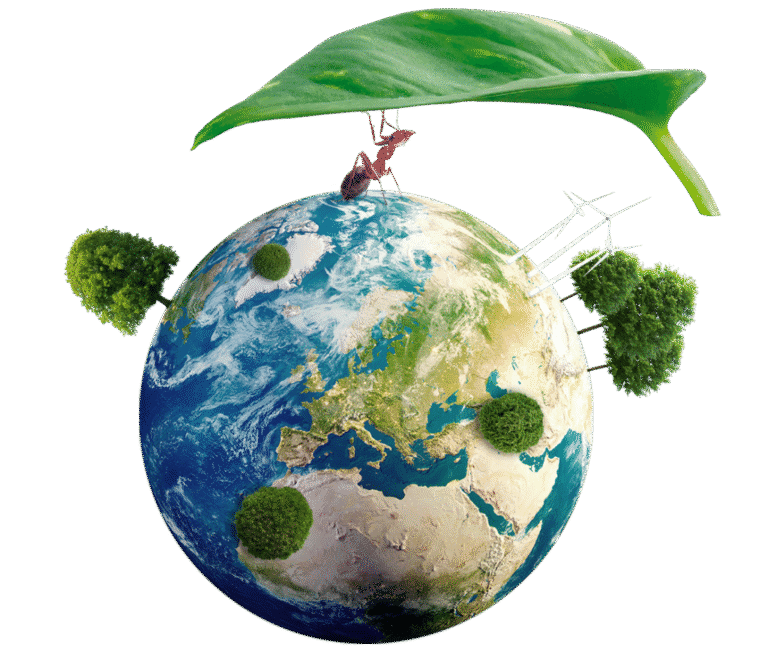
Għall-Bniedem
Riskji għas-Saħħa tal-Bniedem mill-Bdiewa tal-Fabbriki
Ir-razzied ta' annimali fuq skala kbira huwa periklu kbir gāħ saıṭ il-bniedem u jirrižsultati minn attivitajiet imħafra u imneḍdija. Wieıed mill-aktar kwistjonijiet serji huwa l-užu żejed ta' antibijotici fil-bhejjem, li huwa komuni f'dawn il-fabbriki biex jipprevjeni l-mard f'kundizzjonijiet ta' sovraffollament u stress. Dan l-užu intens ta' dan iwassal gāṣ il-ħolqien ta' batteri li huma rezistenti gāṣ l-antibijotici, li mbagāad jižidu lill-bnedmin minn kuntatt dirett mal-infettati, il-konsum ta' prodotti infettati, jew sorsi ambjentali bħall-ilma u l-ħamrija. It-tixrid ta' dawn is-"superbugs" huwa theddida maṢžura gāṣ is-saıṭ tad-dinja peress li jista' jagāṣi l-infezzjonijiet li kienu ttrattati faċilment fil-passat rezistenti gāṣ il-mediċini jew anke inkuraıli. Barra minn hekk, ir-razzied ta' annimali fuq skala kbira joṭāu wkoll klima perfetta gāṣ l-emerġenza u t-tixrid ta' patogeni zoonotiċi—mard li jista' jinkiseb u jittrasmetti mill-annimali lill-bnedmin. Ġermijiet bħal Salmonella, E. coli, u Campylobacter huma l-abitanti tar-razzied imneḍdija ta' annimali li t-tixrid tagāṣhom jižād liċ-ċansijiet ta' eżistenza tagāṣhom fil-laıħ, il-bajd, u l-prodotti tal-ħalib li jwasslu gāṣ il-mard u l-epidemiji tal-ikel. Minbarra r-riskji mikrobiċi, il-prodotti tal-annimali r-razzjati f'fabbriki huma spiss għonja f'xama tatir u kolesterol, u jikkawžau diversi mard kroniku, bħall-obeżità, il-mard kardjovaskulari, u d-dijabete tat-tip-2. Barra minn hekk, l-užu żejed ta' ormoni tal-ħajja fil-bhejjem gāamel tħassib dwar possibbli diżordnijiet ormonali kif ukoll effetti fuq saıṭ fit-tul tal-bnedmin li jikkunsmaw dawn il-prodotti. Il-tniġġis ambjentali kkawžat mir-razzied ta' annimali fuq skala kbira jaffettwa wkoll b'mod indirett is-saıṭ tal-komunitajiet fil-qrib peress li l-iskart tal-annimali jista' jippenetra l-ilma tax-xorb b'nitrat u batteri perikoluži li jirrižultaw f'problemi gastro-intestinali u problemi oṭra tas-saıṭ. Qabel dan, dawn il-perikli jispjegaw in-neċessità ta' tibdil immedjat fil-mod kif l-ikel již prodott sabiex jiddefendi s-saıṭ pubbliku u wkoll l-inċentiv ta' metodi agrikoli aktar sikuri u sostenibbli.
L-isfruttament tal-annimali huwa kwistjon pervasiv li affligġa lil soċjetà tagħna għal sekli sħaħ. Mill-użu tal-annimali għall-ikel, l-għamla, id-divertiment,...
Fis-snin riċenti, id-dinja ħarġet temmen fiż-żieda ta' mard zoonotiku, b'tifqigħa bħal Ebola, SARS, u l-aktar...
Fis-soċjetà tal-lum, kien hemm żieda sinifikanti fin-numru ta' individwi jduru għal dieta bbażata fuq il-pjanti. Kemm...
B'daqqa t'id, qed tiżdied il-konsapevolezza tal-impatt negattiv tal-drawwiet ta' konsum tagħna ta' kuljum fuq l-ambjent u l-benesseri tal-annimali, l-etika...
Fid-dinja tal-ġestjoni tal-piż, hemm fluss kostanti ta' dijiet ġodda, supplimenti, u reġimi ta' eżerċizzju li jħeġġu riżultati tajbin...
Bħala soċjetà, ilna nħeġġeġu biex nikkunsmaw dieta bilanċjata u varjata biex nżommu s-saħħa ġenerali tagħna...
Għall-Annimali
Is-Soffriment tal-Annimali Fit-Trobbija tal-Fabbriki
It-tnissil fuq skala kbira huwa bbażat fuq krueltà mhux imaginabbli lejn l-annimali, billi dawn l-annimali jitrawaw bħala komoditajiet sempliċi aktar milli bħala ħlejqiet sensittivi li jistgħu jħossu l-uġigħ, il-biża', u d-dipressjoni. L-annimali f'dawn is-sistemi jinżammu f'gabbani konfinati b'kamra żgħira ħafna biex jimxu, wisq inqas biex iwettqu mġiba naturali bħall-mergħa, in-nistgħa, jew is-soċjalizzar. Il-kundizzjonijiet ta' konfinament iwasslu għal tbatija fiżika u psikoloġika serja, li tirriżulta f'korrimenti u tikkawża stati twal ta' stress kroniku, bl-iżvilupp ta' mġiba anormali bħall-aggressività jew il-ħsara lill-ġisem innifsu. Iċ-ċiklu ta' ġestjoni riproduttiva involontarja għall-annimali omm huwa infinit, u l-frieħ jitneħħew mill-ommiet fi żmien sigħat mit-twelid, u dan jikkawża stress akbar kemm għall-omm kif ukoll għat-tifel. Il-bqal ħafna drabi jiġu iżolati u mitfiin 'il bogħod minn kwalunkwe interazzjoni soċjali u rabta mal-ommien tagħhom. Proċeduri ħajjin bħat-tneħħija tad-denb, id-debeaking, il-kastrar, u t-tneħħija tal-qrun jitmexxew mingħajr anesteżija jew mitigazzjoni tal-uġigħ, u dan jikkawża tbatija mhux neċessarja. L-għażla għall-produttività massima - kemm jekk tkun rati ta' tkabbir aktar mgħaġġel fil-ħnieżer jew rendimenti tal-ħalib ogħla fil-baqar tal-ħalib - wasslet għal kundizzjonijiet ta' saħħa serja li huma tassew ħajjin: mastite, fallimenti ta' organi, deformitajiet fl-għadam, eċċ. Ħafna speċi jsofru għal ħajjithom kollha f'ambjenti nieżla, mimlija nies, u b'danger kbir ta' marda, mingħajr kura veterinarja adegwata. Meta jiġu miħrumin mix-xemx, l-arja friska, u l-ispazju, jsofru f'kundizzjonijiet ta' fabbrika sa jum il-massakru. Din il-krueltà kontinwa tqajjem tħassib etiku imma turi wkoll kemm huma 'il bogħod l-operazzjonijiet tal-biedja industrijali minn kwalunkwe obbligu morali li jirrigwardaw l-annimali b'ħniena u b'dignità.
L-isfruttament tal-annimali huwa kwistjon pervasiv li affligġa lil soċjetà tagħna għal sekli sħaħ. Mill-użu tal-annimali għall-ikel, l-għamla, id-divertiment,...
B'daqqa t'id, qed tiżdied il-konsapevolezza tal-impatt negattiv tal-drawwiet ta' konsum tagħna ta' kuljum fuq l-ambjent u l-benesseri tal-annimali, l-etika...
F’dawn l-aħħar snin, it-termini “minn iħaddan il-fenek” kienu jintużaw biex jisfettaw u jnaqqsu lil dawk li jippromwovu d-drittijiet tal-annimali...
L-oċean jkopri aktar minn 70% tal-wiċċ tad-Dinja u huwa dar għal firxa diversi ta' ħajja akwatika. Fi...
Il-veganizmu huwa aktar minn sempliċement għażla dietetika—jirrappreżenta impenn etiku u morali profond biex jitnaqqas il-ħsara u jiġi promoss...
Il-biedja tal-fabbriki saret prattika wiesgħa, li tbiddel il-mod kif il-bnedmin jinteragixxu mal-annimali u tifforma r-relazzjoni tagħna magħhom...
Għall-Pjaneta
Riskji għas-Sostenibbiltà mill-Biedja tal-Fabbriki għall-Pjaneta
Ir-razzied ta' fabbriki toħloq ammont monumentali ta' riskju għall-pjaneta u l-ambjent, u jsir plejer ewlieni fid-degradazzjoni tal-ekoloġija u t-tibdil fil-klima. Fost l-aktar konsegwenzi ambjentali li għandhom impatt qawwi tal- bidla fil-klima hemm l-emissjonijiet tal-gass serra. Ir-razzied tal-bhejjem, speċjalment minn baqar, jipproduċi kwantitajiet kbar ta' metanu—gass serra intens li jżomm is-sħana fl-atmosfera b'mod effiċjenti ħafna meta mqabbel mad-diossidu tal-karbonju. Għalhekk dan huwa fattur ewlieni ieħor li jikkontribwixxi għat-tisħin globali u jipprovdi aċċellerazzjoni għat-tibdil fil-klima. Madwar id-dinja, it-tneħħija massiva ta' artijiet bil-foresti għat-trobbija tal-annimali jew għat-tħawwil ta' uċuħ bħal sojja u qamħirrum għall-għalf tal-annimali turi naħa qawwija oħra tar-razzied ta' fabbriki li tikkawża d-deforestazzjoni. Minbarra li tnaqqas il-kapaċità tal-pjaneta li tassorbi d-diossidu tal-karbonju, id-distruzzjoni tal-foresti tfixkel ukoll l-ekosistemi u thedded il-bijodiversità billi tħassar l-abitats għal speċi innumerevoli. Barra minn hekk, ir-razzied ta' fabbriki twassal għal riżorsi kritiċi tal-ilma, peress li ħafna ilma huwa meħtieġ għall-bhejjem, it-tħawwil tal-għalf u l-iskart. L-iskart indiskriminat tal-annimali jħalli xmajjar, lagi u ilma soteran b'sostanzi ħ有害 bħal nitrati, fosfati u organiżmi vijabbli, u jwassal għall-tniġġis tal-ilma u l-ħolqien ta' żoni mejtin fl-ociani fejn il-ħajja tal-baħar ma tistax teżisti. Problema oħra hija d-degradazzjoni tal-ħamrija minħabba l-iskarsezza tan-nutrienti, l-erożjoni u d-deżertifikazzjoni minħabba l-isfruttament żejjed tal-art għall-produzzjoni tal-għalf. Barra minn hekk, l-użu qawwi tal-pestiċidi u l-fertilizzanti jħassar l-ekosistema tal-madwar li tagħmel ħsara lill-pollinaturi, l-annimali selvaġġi u l-komunitajiet umani. Ir-razzied ta' fabbriki mhux biss twassal għal saħħa fqira fuq il-pjaneta, iżda wkoll tiżdied l-istress fuq ir-riżorsi naturali u b'hekk toqgħod fil-mogħdija tas-sostenibbiltà ambjentali. Biex jiġu ttrattati dawn il-kwistjonijiet, tranżizzjoni għal sistemi tal-ikel aktar sostenibbli hija essenzjali, waħda li tinkludi konsiderazzjonijiet etiċi għall-benesseri tal-bniedem u tal-annimali u għall-ambjent innifsu.
Hekk kif il-popolazzjoni dinjija tkompli tikber, tiżdied ukoll id-domanda għall-ikel. Wieħed mis-sorsi primarji tal-proteina...
B'daqqa t'id, qed tiżdied il-konsapevolezza tal-impatt negattiv tal-drawwiet ta' konsum tagħna ta' kuljum fuq l-ambjent u l-benesseri tal-annimali, l-etika...
It-tieni tat-trobbija tal-bhejjem ilu parti ewlenija taċ-ċivilizzazzjoni umana għal eluf ta’ snin, u jipprovdi sors vitali ta’ ikel...
Bħala soċjetà, ilna nħeġġeġu biex nikkunsmaw dieta bilanċjata u varjata biex nżommu s-saħħa ġenerali tagħna...
Il-biedja fuq il-fabbrika, magħrufa wkoll bħala agrikoltura industrijali, saret metodu dominanti ta' produzzjoni tal-ikel f'ħafna pajjiżi madwar id-dinja...
Hawnhekk, dilettanti tal-annimali u ħbieb li jkunu konsapvoli tal-ambjent! Illum, se jniceħdu dwar suġġett li jista’ ma jkunx il-...
Tibni Futur Kompassjonat u Sostenibbli
- Fl-unità, ejjew nirrenġaw futur li fil-fatt l-agrikoltura fuq skala kbira li għamlet l-annimali jsofru issir storja li nistgħu nitkellmu dwarha b'tabassim fuq uċuħna, fejn l-istess annimali joriġnu fuq it-tbatijiet tagħhom li ġraw żmien twil ilu, u fejn l-għadd ta' individwi u tal-pjaneta huwa fost il-prijoritajiet ewlenin tagħna kollha. L-agrikoltura hija waħda mill-modi ewlenin biex nipproduċu l-ikliet tagħna fid-dinja; madankollu, is-sistema ġġib xi konsegwenzi ħżin. Pereżempju, l-uġigħ li jesperjenzaw l-annimali huwa sempliċement intollerabbli. Dawn jgħixu f'ispazji stretti u sħaħ, li jfisser li ma jistgħux juri l-imġiba naturali tagħhom u, ħażin iżjed, huma soġġetti għal każijiet bla għadd ta' uġigħ kbir. L-agrikoltura tal-annimali mhijiex ir-raġuni biss għall-annimali biex jsofru iżda wkoll l-ambjent u l-għadd jidhru fuq ir-radar. L-użu żejjed ta' antibijotici fil-bhejjem jikkontribwixxi għat-tkabbir ta' batterji reżistenti għall-antibijotici, li jirrepreżentaw theddida għas-saħħa tal-bniedem. L-annimali bħall-baqar huma wkoll sors ta' tniġġis fl-ilma minħabba l-ħruġ ta' kimiċi ħżin. Min-naħa l-oħra, it-tħeġġiġ tal-agrikoltura tal-annimali permezz tal-attivitajiet ta' tħassir tal-foresti u l-bidla fil-klima permezz tal-emissjoni kbira ta' gassijiet serra hija l-kwistjoni dominanti.
- Twemminna huwa f’dinja fejn kull kreatura li hawn tiġi onorata bir-rispett u d-dinjità, u l-ewwel dawl twaddi fejn imnanna. Permezz tal-midja tal-gvern tagħna, programmi edukattivi, u sħubiet strateġiċi, ħadna f’dmna l-kawża ta’ tgħid il-verità dwar ir-razzied tar-roduktività, bħat-trattament tassew ħafna u kruċjali tal-annimali bħala annimali li huma skjavi m’ għandhom l-ebda dritt u jkunu martri sat-tmien. L-għan ewlieni tagħna hu li nipprovdu edukazzjoni għan-nies sabiex ikunu jistgħu jieħdu deċiżjonijiet għaqli u fil-fatt iġibu bidla vera. L- Humane Foundation huwa istituzzjoni bla profitt li taħdem lejn li tippreżenta soluzzjonijiet għall-ħafna problemi li ġejjin mir-razzied tar-roduktività, sostenibilità, il-welfare tal-annimali, u s-saħħa tal-bniedem, u b’dan l-individi jistgħu jallinjaw l-imġiba tagħhom mal-valuri morali tagħhom. Billi nħarrġu u nippromwovu sostituti bbażati fuq il-pjanti, niddħlu fil-ħolqien ta’ politiki effettivi għall-welfare tal-annimali, u nistabbilixxu netwerks ma’ organizzazzjonijiet simili, qegħdin nħaddmu b’fedelta biex nibnu ambjent li huwa kemm ta’ kompassjoni u sostenibbli.
- Humane Foundation hu konnessi b'għan komuni—ta' dinja fejn ikun hemm 0% ta' abbuż ta' annimali tal-farm tal-fabbrika. Kien jekk ikun konsumatur ikkonċernat, dilettant tal-annimali, riċerkatur, jew politiku, ikun il-mistieden tagħna fil-moviment għat-tibdil. Bħal tim, nistgħu nfasslu dinja fejn l-annimali jittrattaw b'ħniena, fejn is-saħħa tagħna tkun prijorità u fejn l-ambjent jinżamm netti għall-ġenerazzjonijiet futuri.
- Il-websajt hija t-triq għall-għarfien tar-realtajiet dwar il-fabbriki tal-oriġini, tal-ikel uman permezz ta 'xi għażliet oħra u ċ-ċans li wieħed jisma' dwar l-aħħar kampanji tagħna. Aħna nipprovdu opportunità biex wieħed jidħol f'bosta modi inklużi li wieħed jaqsam ikel ibbażat fuq il-pjanti. Barra minn hekk, sejħa għall-azzjoni hija li wieħed jitkellem u juri li wieħed jieħu ħsieb il-promozzjoni ta 'politiki tajbin u l-edukazzjoni tal-viċinat lokali tiegħek dwar l-importanza tas-sostenibbiltà. Att żgħir li jibni l-elettriku jħeġġeġ lil oħrajn biex ikunu parti mill-proċess li se jġib lid-dinja f'livell ta 'atmosfera ta' għixien sostenibbli u aktar kumpassjoni.
- Huwa l-ħidma tiegħek għall-ġenit u l-entużjażmu tiegħek li jagħmlu d-dinja aħjar li jgħoddu l-aktar. L-istatistika turi li qegħdin ninsabu f’fażi fejn għandna l-qawwa li noħolqu d-dinja tal-ħolma tagħna, dinja fejn l-annimali jiġu ttrattati b’kompassjoni, is-saħħa tal-bniedem tkun fl-aħjar forma tagħha u d-dinja tkun ħajja mill-ġdid. Iġu lesta għall-għexieren ta’ snin li ġejjin ta’ ġenit, ġustizzja u ġid għall-bnedmin kollha.

SOLUZJONI
Hemm biss soluzzjoni waħda...
Waqqaf l-isfruttament tal-ħajja fid-Dinja.
Sabiex id-Dinja terġa’ tikseb il-bilanċ naturali tagħha u terġa’ tirkupra mill-ħsara ambjentali kkawżata mill-fattur tal-fabbriki, irridu nħallu l-art għall-ħolqien u nwaqqfu l-isfruttament tal-annimali u l-ekosistemi.
Referenzi
[1] https://en.wikipedia.org/wiki/Water_footprint#Water_footprint_of_products_(agricultural_sector)
[2] https://wwf.panda.org/discover/knowledge_hub/where_we_work/amazon/amazon_threats/unsustainable_cattle_ranching/
[3] https://www.weforum.org/stories/2019/12/agrikoltura-art-abitabbli
[4] https://www.fao.org/4/a0701e/a0701e00.htm
[5] https://ourworldindata.org/data-insights/biljuni-ta'tiċrit-ġew-maqtula-għall-laħam-kull-sena
[6] https://www.worldanimalprotection.org.uk/latest/blogs/impatti-ambjentali-taz-zraċ-żoomas
[7] https://www.feedbusinessmea.com/2024/12/03/l-industrija-tal-għalf-għall-annimali-to-tutilizza-1048m-tonnellati-taċ-ċereali-fl-2024-25-igc/
[8] https://en.wikipedia.org/wiki/Livestock’s_Long_Shadow#Report
[9] https://www.who.int/news/item/07-11-2017/waqqfu-t-therapeutici-antibiotika-fl-annimali-sano-biex-tipprevjeni-t-tixrid-tar-reżistenza-għall-antibiotici
[10] https://en.wikipedia.org/wiki/Fish_slaughter#Numbers
[11] https://www.unep.org/news-and-stories/press-release/is-sistema-globali-tal-ikel-sewwa-ħafna-telf-ta'bijodiversità
[12] https://ourworldindata.org/użu-tali-art-dieti

